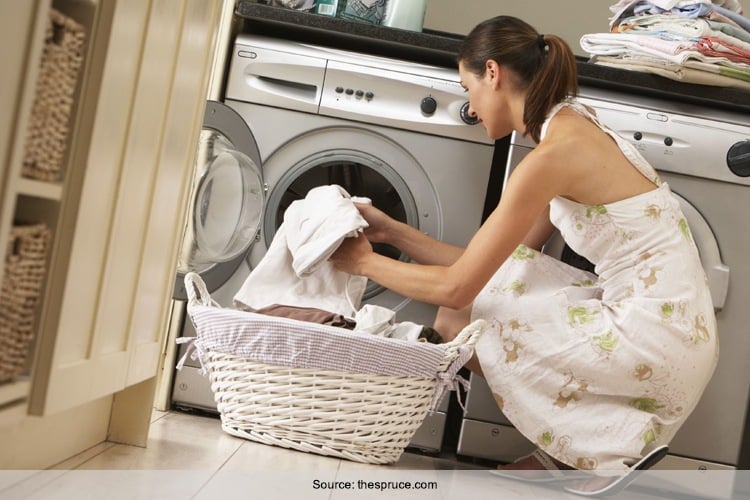
We all know whites are the toughest hue to maintain. Its brightness fades away in a few months’ period or even less, depending upon the usage. In addition, it is difficult to prevent color bleeding, sweat, and stains from getting to your whites. Fortunately, there are few tips that you can follow on how to wash white clothes other than using additives like bleach. These simple rules can automatically increase the brightness of your whites, and make it look like new.
Take a look:
How To Wash White Clothes To Keep Them Looking New:
1. Seperate your Laundry
Setting white laundry aside from colored laundry is the first step to maintaining white clothes. Remember that even the lightest of colors can get transferred onto whites. Therefore, separate a pile of white clothes and light clothes in respective load. Doing this can prevent color bleeding and prevent white fabric from looking dull.
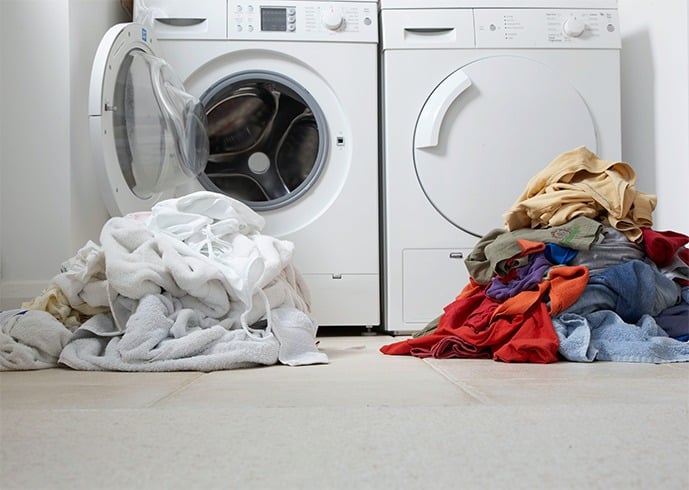
Source: thespruce.com
2. Use detergent in moderation
Most people tend to overload washer with detergent to clean clothes. This step is not right. In fact, using too much detergent can actually make clothes dirtier. Detergents are used to loosen soil in clothes. Also there should be enough space between clothing items and water to remove dirt rather than leave residue on clothing. When you use a lot of detergent, it tends to stick on more dirt. Therefore, use detergent for white clothes in moderation.
3. Bluing Agents or Optical Brighteners
Try to use a bluing agent to neutralize yellow stains on white clothes. These bluing formulas release small amounts of blue dye to water and make white clothes whiter. You can make use of a good bluing formula and follow the instructions carefully while washing white clothes. You can pour the bluing agents directly on clothes or put it in machine’s dispenser. Following these steps can make your whites newer than ever.
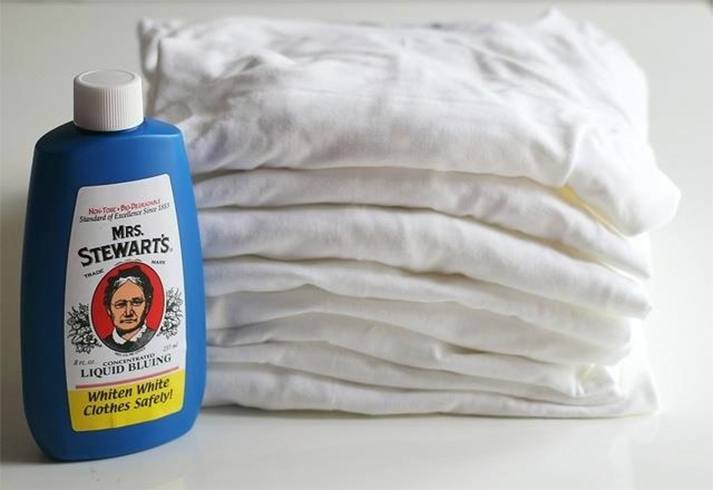
Source: wonderhowto.com
4. Use low heating for drying clothes
High heat settings can scorch fabrics, and make white clothing look yellow. To avoid all these, follow the drying instructions on the label carefully. In addition, make use of a lower heat setting, and transfer the clothes out of the dryer when still damp. If you are using an automatic dryer, then select a lower heat setting and air dry. Too much heat can soil stains and residue to yellow.
5. Use the right type of bleach for each fabric
Bleaching white clothes can clean white clothes but the chlorine present in bleach can be damaging for few fabrics. Even though it whitens, clothes will turn yellow or grey. Therefore, make use of the right type of bleach. For example, make use of chlorine bleach to remove heavy stains, or one part bleach and baking soda to balance toxicity of pure bleach. Make exact use of bleach as instructed on packaging label. Do not use bleach on delicate clothes since chlorine based bleach can weaken fabrics. You can also alternate bleach with other household ingredients that contains bleaching properties, like lemon juice, white vinegar, baking soda, and hydrogen peroxide. All these natural ingredients will whiten whites without harming the clothes material.
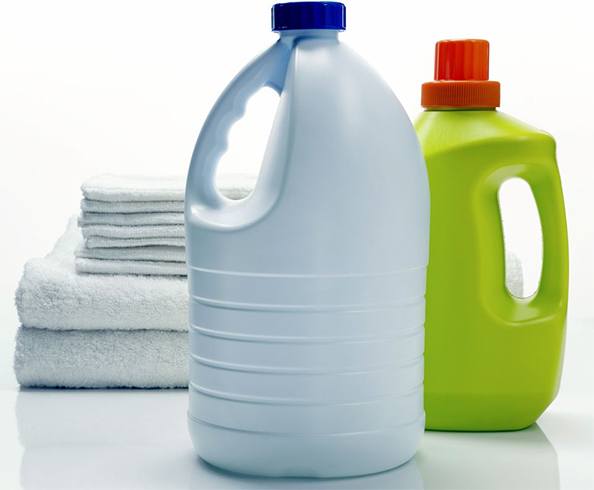
Source: thespruce.com
6. Try lemon juice
Lemon juice acts as a natural bleach and can be used effectively to whiten clothes. Instead of tossing your white laundry into washer, whiten these items in a citrus soak. Allow the clothes to soak for an hour or overnight. Rinse off next day as normal. Alternatively, add few drops of lemon juice to washer and achieve the same results.
7. Use borax
Borax can soften hard water, remove dirt, and improve detergent quality. It is natural and safe to use on white clothes while washing. Before using one, follow the instructions given in the box carefully. A little amount of borax can increase the effectiveness of your regular laundry detergents, making it effective for restoring whites. It can remove residue from stains without harming the fabrics.
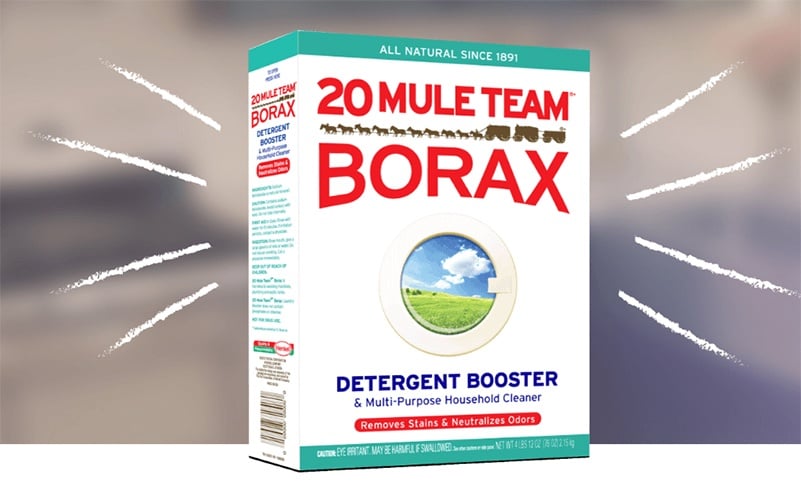
Source: 20muleteamlaundry.com
8. Use automatic dishwasher detergent
Dish wash detergent can act as a brightener for white laundry. It is quite effective even on white socks and underwear. You can try any type of brand to whiten the clothes. Add few tsp of automatic dishwasher detergent in a tub of water, and mix well. Add the clothes and allow it to soak for one hour. Rinse off as normal. Or, blend a little amount of automatic dishwasher detergent, and soak your whites in regular wash cycle.
9. Try Hydrogen Peroxide
Hydrogen peroxide is a great ingredient to add new life to your dull white clothes. It acts as an oxidizer to dissolve residue and brighten whites. This solution is all-natural and makes for a great stain-remover. You can mix one part of dish detergent and two parts of hydrogen peroxide. Transfer into a squirt bottle. Spray this mixture onto stained areas of white clothes. In addition, mix ½ cup hydrogen peroxide, ½ cup baking soda, and one cup water to clean spots and stains off white clothes.
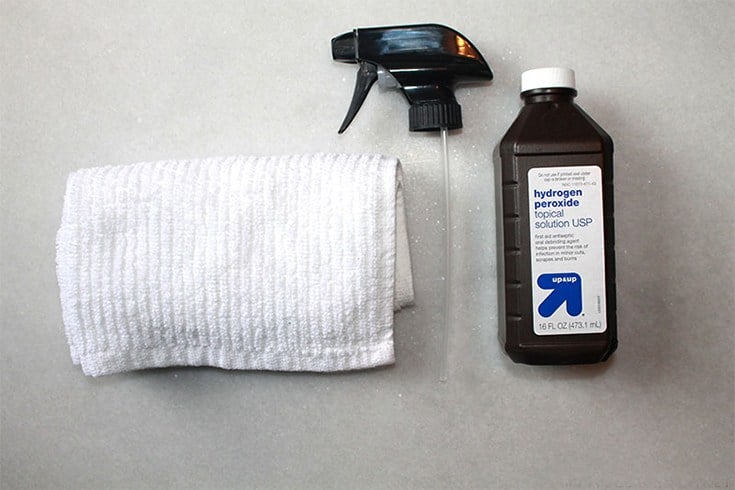
Source: cleanmama.net
10. Whitener
You can go for whiteners available at stores instead of making one yourself. You can try a brand like White Brite. These types of whiteners can remove yellowness, stains, and rusted stains from white clothes effectively. Usually a little amount of whitener goes a long way to whiten clothes, but do follow the instruction label carefully.
13. Do Not Overload Washer
Do not add too many clothes in the washer. There should be enough space in the washer between items and water to properly rinse off soiled clothes. The extra room in the washer can allow washing clothes better. An overloaded washer cannot release dirt from fabric easily. With that in mind, follow load sizes of washer well. For example, a small load fills about ½ of washer, a medium load fills about ½ full, and a large load fills about ¾ full.
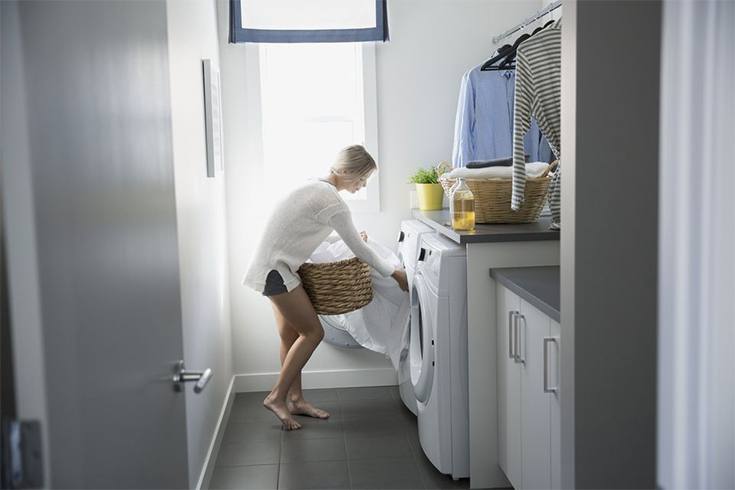
Source: thespruce.com
14. Add baking soda
You can try a homemade solution of baking soda and water to whiten your whites. Blend this mixture into the washing machine without any other additives. Add four liters of water and one cup of baking soda to your white laundry. Allow it to soak for an hour. Rinse off as normal. Your clothes will remain fresh and clean as new when done.
15. Use Hot Water For Fabric
You can wash your white clothes in hot water as much as possible. Using hot water can be more effective in killing germs and bacteria. It can brighten your whites in just one wash. While washing white laundry, make adjustments to water temperature as directed on care labels to prevent clothes from getting damaged. Make these adjustments particularly on clothing made from nylon, lycra, spandex, and other cotton materials. For each stain treatment on whites, rinse, and soak clothes for 30-60 minutes in hot water. This can help to lift off stains and dissolve them. If your whites are sensitive to hot water, a warm soak can achieve similar effect, to a lesser degree.
16. Use Cold Water to Wash off Stains from Whites
When you get stains on your white clothes from items like wine, tea, coffee, and chocolate, make use of cold water to rinse it off. Making use of cold water rather than hot water can prevent stains from spreading or bleeding onto your white clothes.
17. Treat Stains Immediately
You should immediately transfer white clothes from washing machine to dryer after the washer stops. Following this step can prevent whites from developing mold or mildew from sitting in the washer for a long period of time.
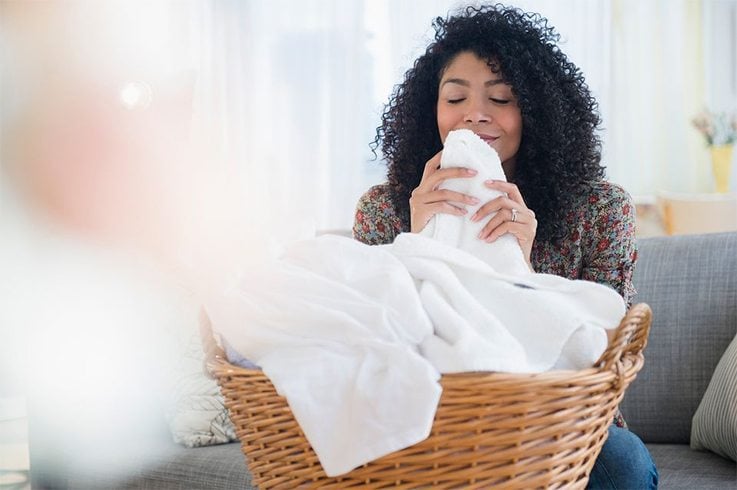
Source: thespruce.com
18. Avoid High Heat
You should check your temperature settings and avoid high heat temperature for white clothes. Take care of selecting the correct temperature setting depending on the fabric. Selecting the right iron temperature can ease the handling of whites. This can make ironing process simpler and give better results.
19. Clean Washer Every Three Months
Keep your washer clean all times, for better washing results. This can help to maintain your white clothing as well. It is essential to clean your washing machine thoroughly at least every three months. This is highly applicable for higher efficiency, washing machine, including both top load and front load that uses lesser water for every load of garments.
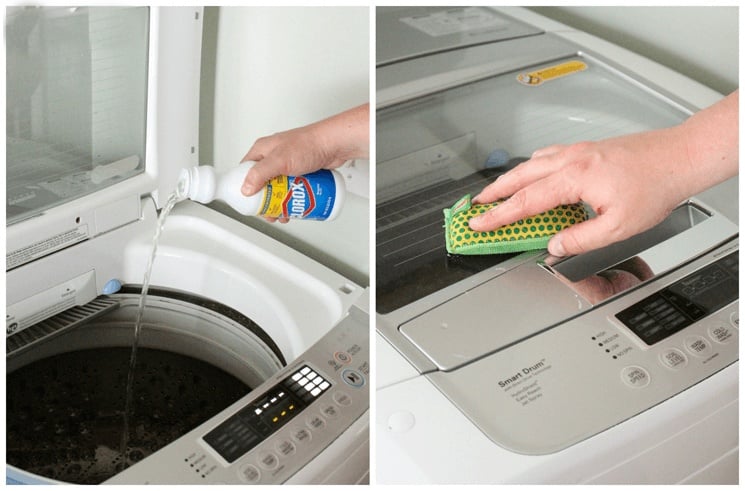
Source: onegoodthingbyjillee.com
20. Dry Clean White Clothes After Every Wear
You should wash or dry clean white clothes after every wear even if they are clean. This is so because the use of body oils or deodorants and sweat can quickly transfer into yellow stains. If you want to maintain your whites, then make sure the clothes are washable and do not involve dry cleaning methods.
21. Arrange Clothes According To Care Instructions
Few white clothing instructions come with certain dryer settings. You need to correctly follow all of these guidelines in order to maintain whites. You can particularly take care of fabrics like nylon and acrylic that can require a certain low temperature setting because these fibers tend to absorb lesser water.
22. Keep White Clothes Separate That Produce Lint From Other Whites
Keep away white clothes that produce lint from other whites while washing. This can prevent lint from collecting and sticking to other fabrics, which are otherwise difficult to take off. For this, wash white clothes separately from white clothes made from corduroy to stop lint from attaching to corduroy.
23. Transfer Whites From Washer To Dryer Instantly After Washing Machine Stops
It is important to transfer whites from washer to dryer instantly after washing machine stops. This can prevent white garments from developing molds or mildew because of storing in the washer for long period of time.
24. Dry Whites According to Care Instructions
You should sort your white clothes according to the care guidelines given. Clothing labels and tags come with washing instructions including water temperature, water cycle, and bleach usage. Following all of these instructions can allow you to maintain your whites well. For example, you cannot use strong bleach for soft fabrics as it can spoil clothes. In addition, place all gentle clothing on one side and regular clothing on the other. Wash separately to avoid damage.

Source: lushome.com
25. Use Aspirin
Aspirin is a great remedy for headaches, but do you know it can remove yellow stains from your whites? For using aspirin while washing whites, here is what you need to do. Dissolve five white aspirin pills in water. Add white clothes to the solution. Allow it to set for an hour. Rinse off with cold water until all traces of aspirin is gone. Toss off in washer. Your whites will be good as new.
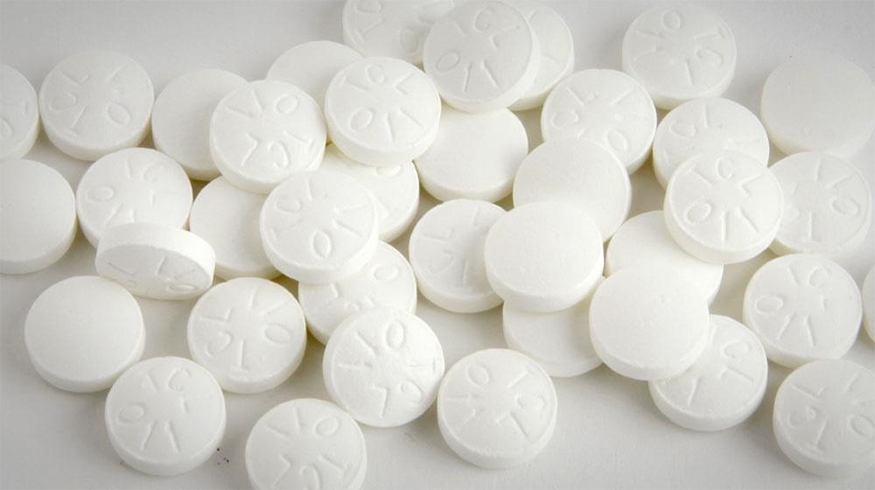
Source: wonderhowto.com
26. Inspect Stains before transferring to dryer
You should check for stains before transferring whites in the dryer. This can save you a lot of washing time and trouble. And it can also prevent stains from setting in the whites. If you are transferring stained clothes to dryer accidently, then you will find it difficult to wash off stains in the next wash. Therefore, always rewash stained whites in the washer until it is clean before placing in dryer.
Sonic Soak is the newest evolution in washing technology that utilizes ultrasonic technology to result in a deeper clean, saved time, water and energy, all in a compact package that can be taken anywhere. Sonic Soak generates modulated ultrasonic waves that travel through water to disintegrate dirt and bacteria at the microscopic level while being significantly more gentle than the conventional washing machine and even traditional hand washing.
What do you think about these tips to wash white clothes without using any strong chemicals? Share your thoughts in the comment box below!
